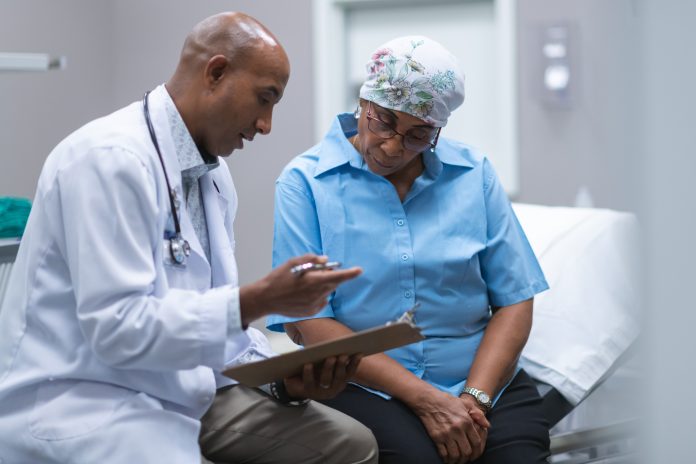
Hospitals serving high numbers of Black and Hispanic patients across the country are less likely to offer basic cancer care services and resources shown to boost cancer outcomes compared to those who do not, according to a study conducted by UCLA researchers and published in JAMA Oncology. The services and resources found lacking are considered to be the basics of what is necessary to provide comprehensive cancer care. They ranged from smoking cessation programs to advanced imaging equipment.
“These are incredibly basic resources that we know correlate with better outcomes,” says Gracie Himmelstein, MD, a resident physician in the department of medicine at the David Geffen School of Medicine at UCLA and first author of the study. “And we know what hospital you go to has a big impact on what sort of care you get. A big piece of why that has to do with the resources that are available at those hospitals.”
Himmelstein says she and her colleagues were inspired by their experience of training and working at different hospitals over the years and noticing that not all hospitals offered the same level of care. They also noticed that the hospitals that lacked basic resources served large numbers of people of color.
“What we found confirms what we had seen in the clinical world,” Himmelstein says. “What was surprising was how consistent it was: pretty much all the services we looked at were more prevalent in hospitals that did not serve people of color.”
The team analyzed patient data from hospitals across the U.S. that accept Medicare and Medicaid to see if observed differences could be substantiated by metrics. They obtained hospital-reported data from the 2020 American Hospital Association Survey. Their analysis included 4,373 hospitals, 432 of which serve high numbers of Black patients and 432 that serve a large population of Hispanic patients (with 62 of these also serving a high number of Black patients).
The researchers looked at the availability of 34 cancer-related services at these facilities, including core services like hospice care and pain management, chemotherapy and radiation therapy, robotic surgery, diagnostic radiology, patient support groups, and tobacco-cessation programs.
They found that hospitals serving high numbers of Black, Hispanic, and other racial and ethnic minority patients were significantly less likely to offer all the core services.
Among these core services, 13 significant disparities emerged. These included access to PET/CT scanners, palliative care, esophageal cancer ablation services, several radiotherapy techniques, diagnostic radiology services, treatments like chemotherapy and robotic surgery, tobacco treatment programs, support groups and acute inpatient psychiatric consultations.
Himmelstein adds that any hope of realizing the promise of precision medicine to reduce disparities in cancer outcomes cannot happen until disparities in basic cancer care are eliminated. “This is the starting place for equalizing resources if then you want to treat people with some of these cutting-edge, personalized medicine treatments.”
Himmelstein says she and her colleagues next plan to look at how resources are related to outcomes and how the lack of these resources impacts the actual care that individual patients get. She adds that the current study speaks to the pervasiveness of structural racism and the need for financial reform for hospitals. “Medicaid reimburses at lower rates and this impacts the financial health of hospitals taking care of these populations. It’s clear that at least part of the answer lies in reforming payment policies.”













